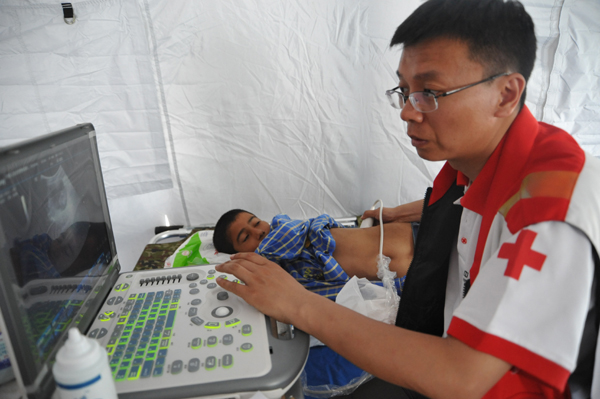 |
|
Doctor Wang Jun was doing the ultrasonography test for 10-year-old Mithun. Provided to China Daily |
Dev Ratna Dhakhaw, secretary-general of the Nepal Red Cross Society, said the Chinese medical support has been highly efficient.
"Before the quake, we had been cooperating with the Chinese Red Cross for years. We have personnel exchange programs every year, and our partnership has been close.
"The joint work in post-quake rescues is a new form of cooperation. Chinese medical teams are very open-minded, and their support is very sustainable."
Hundreds of thousands of homeless families are still living under waterproof fabric at public shelters. When the Nepali Red Cross requested a large number of tents, its Chinese counterpart delivered 2,000 of them. Each tent can house six people.
Wang said: "When we revisited some of the tents we set up for local residents, we found more than 20 people were sharing one of them. We've provided accommodations for more than 10,000 Nepalis, but apparently it's not enough yet."
The possibility of epidemics still exists, and more work on prevention is the key for the Chinese medical workers.
The Chinese Red Cross team is working with local volunteers to hand out free face masks and drugs, and on giving basic health lectures to local communities, especially at public shelters.
"We will go farther into the mountainous areas to help those who have had no access to medical support," Wang said.
